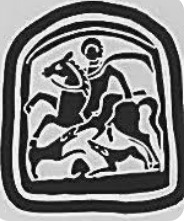CU PRIVIRE LA „IARCUL” DE LA CICIR – COMUNA VLADIMIRESCU, JUDEŢUL ARAD
ON THE „IARC” AT CICIR – VLADIMIRESCU ADMINISTRATIVE UNIT, ARAD COUNTY
Author(s): Eugen PădureanSubject(s): Archaeology, Local History / Microhistory, Middle Ages
Published by: Editura Mega Print SRL
Keywords: Iarc; Cicir; defensive ditch; Middle Age;
Summary/Abstract: The author brings into discussion an aspect of an anthropic intervention on the relief resulting a relief of excavation. Namely, he presents a large canal of 1,622 m length, 23 m width, and 2 – 3.5 m depth today. It began from the south‑eastern part of the village of Cicir, from the village common near by the Mureş River, from the place named „Movila lui Nicoli” [Nicoli’s Hillock]; after a rectilineal way, it went to north‑east falling down in the curvature of an old branch of the Mureş River. That one came from the western area of the localities of Păuliş and Ghioroc, toward the west, with a loop at the north‑west of Cicir to stream away to the main river by the east part of the village pf Sâmbăteni. On the basis of actual data and reasons the author tries to give an answer to some quesions concerning the period it was digged, the aim it was digged for, and the people who ordered such a large work known as „Iarc” in the local speech (a word of a Slavic origin = ditch). He excludes the ditch setting during the Hapsburgs’ period of the Mureş River regularizing (the first half of the 19th century). Some opinions on the aim are emitted. The first one should be related to a process of drainig of swampy terrains given the presence of a minor branch of the Mureş, probably during the Middle Age. Another explanation is related to the possibility that the canal should have been set for navigation of small ships, from the loop directly to the Mureş without caming back. It seems that there were some points‑of‑sale for goods transported by rafts (?), namely some stone‑worked landing places. Another function may be related to the distructive effect on the Mureş bank, the canal setting having directed the flow to another area – namely the minor branch at the north‑eastern part of Cicir. Less probably but not excluded, the canal could have been one for the floating mills if taking into consideration that the wheal of such a mill was the seal of the village of Cicir (1837). The archaeological repertory of the village might favorably puts in light the problems that objective raises.
Journal: BANATICA
- Issue Year: 1/2023
- Issue No: 33
- Page Range: 129-138
- Page Count: 10
- Language: Romanian

